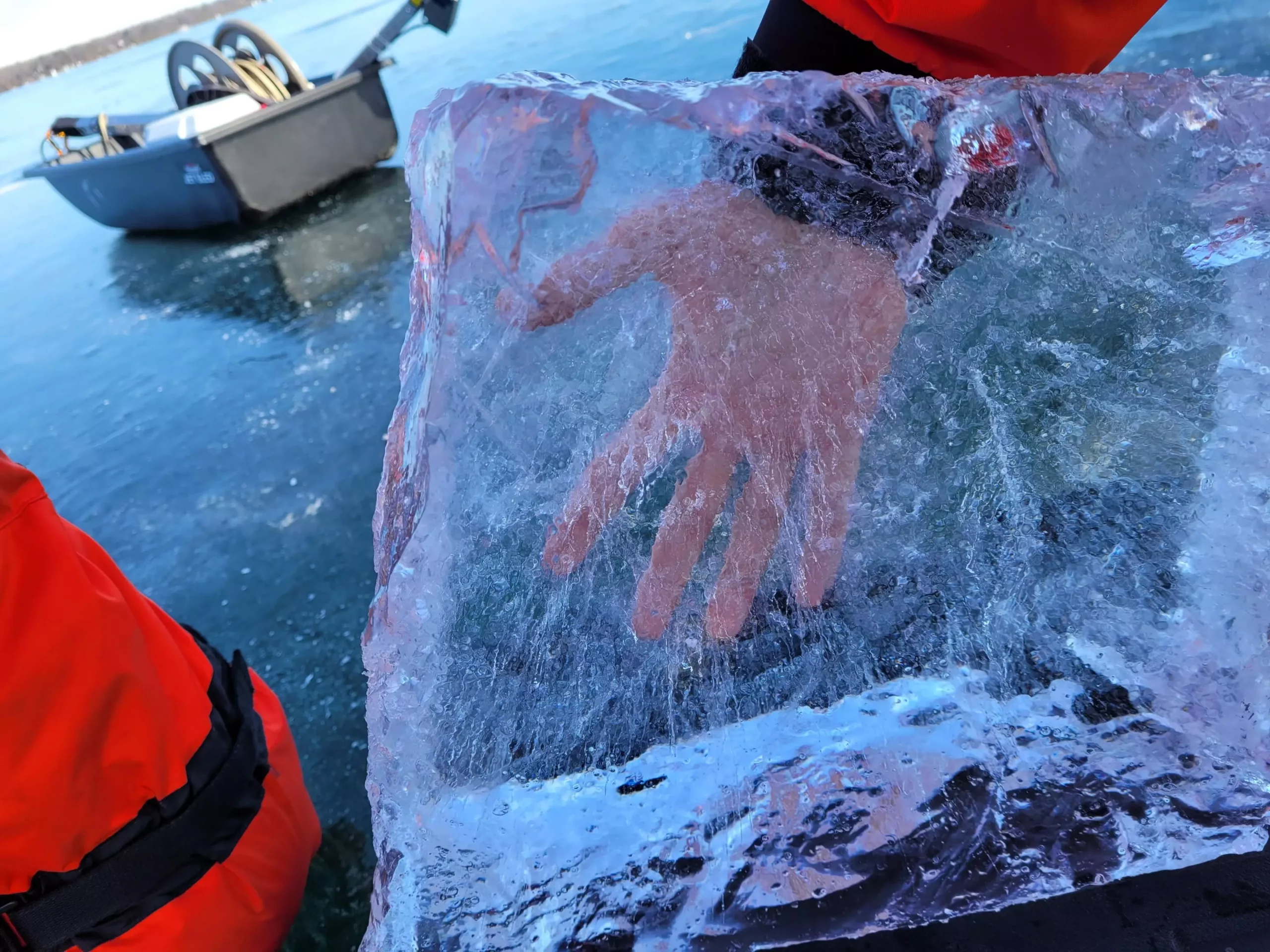As winter settles in, the allure of frozen lakes beckons people for recreational activities such as ice hockey, skating, and fishing. On the surface, a lake covered in ice appears to be an idyllic expanse for leisure; however, recent research conducted by York University reveals that this seemingly stable surface is increasingly fraught with dangers related to climate change. The complexities of ice formation, thickness, and quality are essential to understanding the risks involved in these activities and the ecological implications of warming winters.
Lake ice develops two predominant layers: white ice and black ice, each with distinct characteristics. White ice, which is opaque and laden with air bubbles and tiny crystals, is generally weaker and less stable compared to transparent black ice. The latter is denser and lacks air pockets, allowing it to bear greater weight. As remarked by Professor Sapna Sharma, the distinction between these two types of ice is crucial, as they determine not only the safety of ice-covered surfaces for human activity but also influence the ecosystem beneath it.
The repercussions of climate change have disrupted typical ice formation patterns, leading to an unsettling trend toward thinner layers of resilient black ice while yielding thicker, less stable white ice in many regions. Joshua Culpepper, the study’s lead author, notes that warmer winter conditions have changed the timing of ice formation and thawing, which now occurs earlier in the season. The alteration in these patterns raises profound concerns for those who rely on the ice for transportation and recreation, as the presence of thin and potentially unsafe ice can mislead users into underestimating the hazards at hand.
Traditionally, the thickness of ice layers is a primary measure of safety. However, the findings indicate that relying on thickness alone is no longer adequate for ensuring safety. This shift in understanding reflects a growing awareness that the quality of ice—primarily the balance of black and white ice—is a determining factor. For example, while four inches of black ice may suffice for activities like skating, a predominance of inferior white ice renders the surface perilous.
Professor Sharma emphasizes the necessity for individuals engaging in winter activities to measure ice and be cautious about varying conditions. The risks are evident, as historical data showcases rising incidents of fatalities due to thin or unstable ice—tragically underscoring the need for better public understanding of aquatic safety standards during winter months.
The ramifications of climate change extend beyond immediate safety risks associated with ice instability. The ecological balance beneath frozen lakes demonstrates significant vulnerability to alterations in ice quality. As white ice blocks light from penetrating the surface, it hampers the photosynthesis needed for aquatic plants and phytoplankton, which, in turn, supports a broader aquatic ecosystem. This chain reaction can disrupt food webs and diminish biodiversity, prompting concerns for the overall health of aquatic environments.
Surprisingly, the most extreme impacts of warming conditions are not limited to warmer geographic regions. In fact, northern areas of Canada exhibit alarming fatality rates linked to icy conditions, showcasing that even the coldest terrains are not immune to climate fluctuations. The Arctic warms at an unprecedented rate, which calls into question the future of transport and access for remote communities reliant on ice roads for supply routes.
Hastily shifting ice conditions jeopardize not only recreational users but could isolate remote populations from necessary resources. To illustrate, transport trucks require a minimum of 100 centimeters of robust black ice for safe passage, a standard that, due to increasing instability, is becoming increasingly untenable.
The study conducted by Culpepper and his team highlights a startling lack of data regarding ice quality across the Northern Hemisphere. This gap in information represents a pressing need for regular monitoring of ice conditions, encompassing thorough measurements of black and white ice thickness. By augmenting our understanding of how climate change influences ice health, we can better inform the public regarding potential risks and promote safe practices for various winter activities.
While the winter landscape may retain its charm, the dynamics governing ice formation and stability are rapidly evolving, necessitating heightened vigilance and awareness. As we face the implications of climate change head-on, it is crucial to adapt our practices concerning winter recreation while protecting the ecosystems relying on the natural balance offered by healthy ice environments. Only through sustained monitoring and informed public discourse can future tragedies associated with ice safety be averted.

